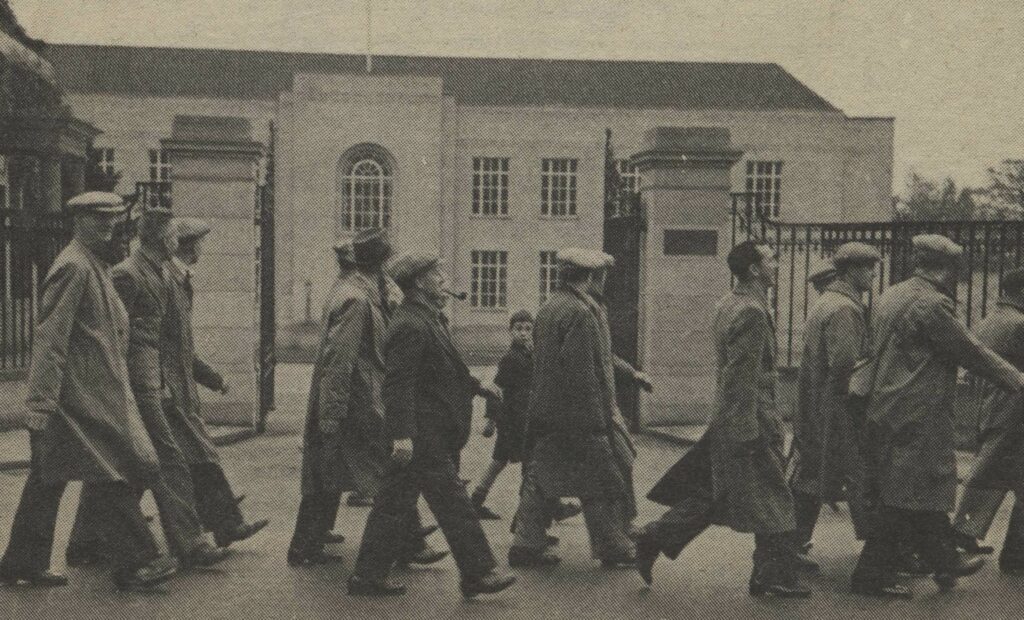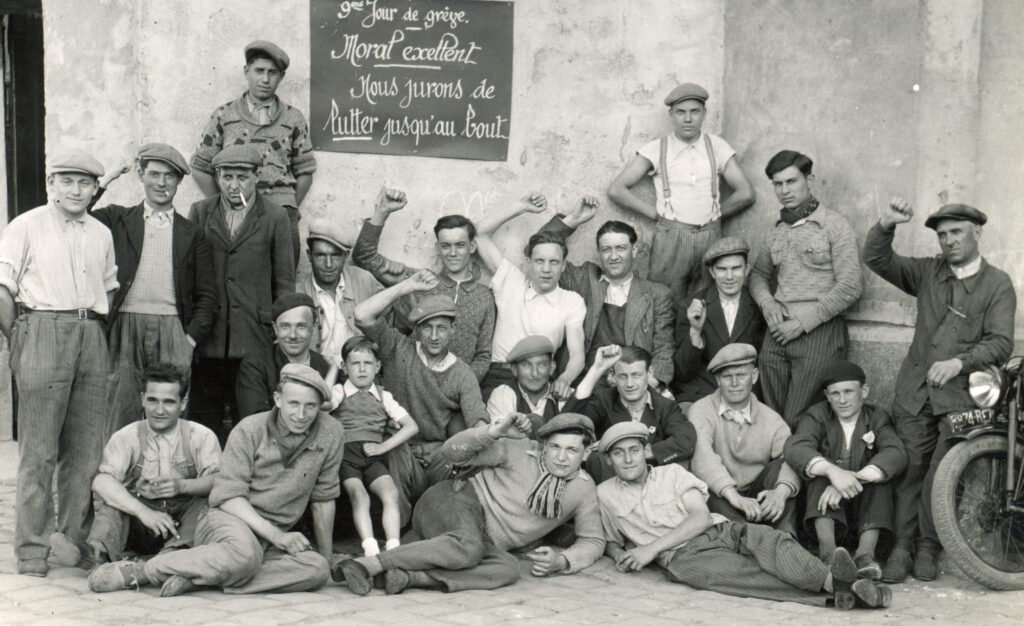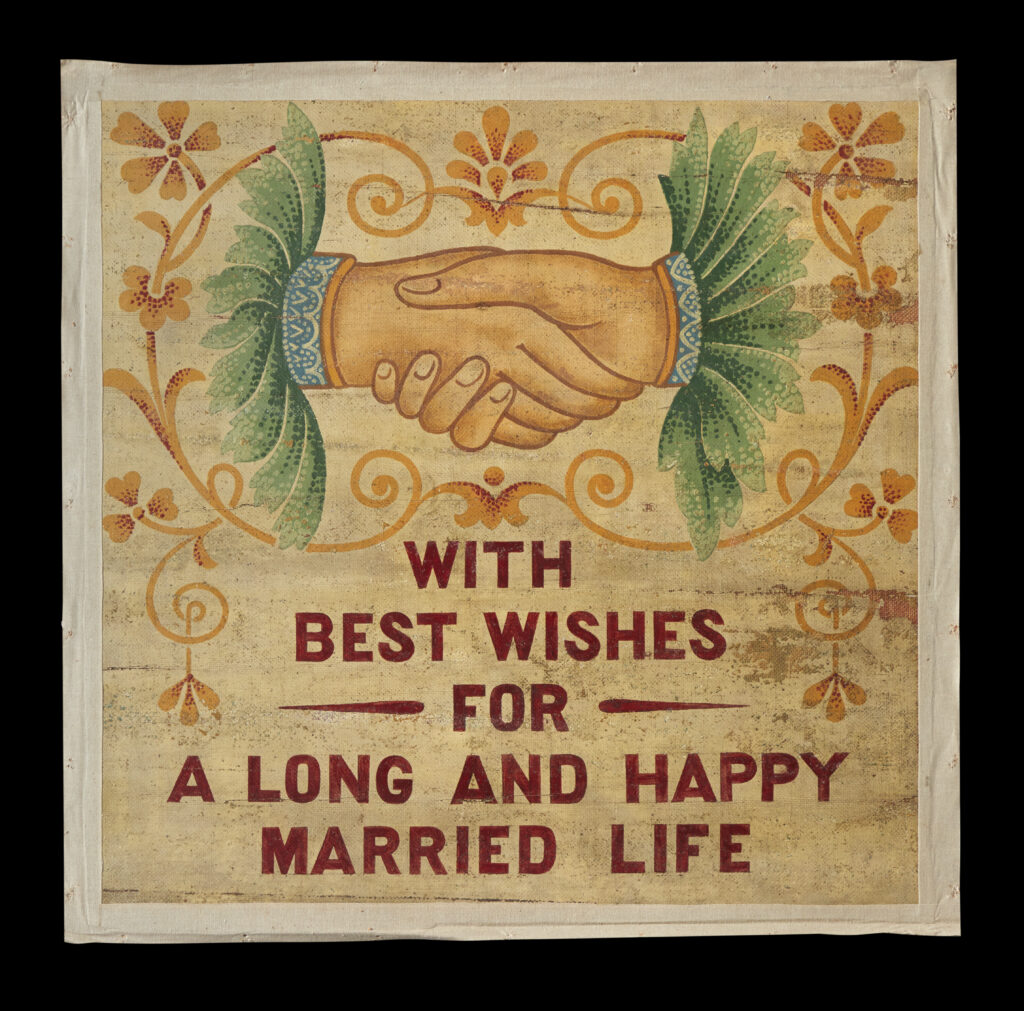Our linoleum collections consist of over 5,000 objects, documents and photographs, covering over 170 years of history. For this story, we’re heading all the way back into linoleum’s pre-history, to its origins in the Kirkcaldy floorcloth industry.
The first floorcloth factory in Scotland was built by Michael Nairn in the Pathhead area of Kirkcaldy. Known colloquially as ‘Nairn’s Folly’, this massive factory was the first stepping-stone in Nairn’s evolution from a small-scale canvas manufacturer to one of the most prolific producers of floorcoverings in the world.

A view of the beach below Ravenscraig castle. Nairn’s Folly is the large building on the top of the cliffs.
Floorcloth itself had existed for centuries; the earliest known reference to it in the UK is in the inventory of a house called Denham Hall in 1736! It was similar to linoleum, and was made of many of the same ingredients and using similar processes. A paste made from resins, cork dust, wood flour and coloured pigments was painted onto a canvas backing. These layers were built up on either side of the canvas, so that each side was smooth and waterproof. A patterned design would then be printed on the ‘top’ side. These could then be used, like rugs or carpets, to cover dirt, wood or stone floors.
For the first 30 years of their foray into floorcoverings, Nairn’s focused exclusively on floorcloth. From 1877, they produced both floorcloth and linoleum, until the former dwindled away in the first few decades of the 20th century.
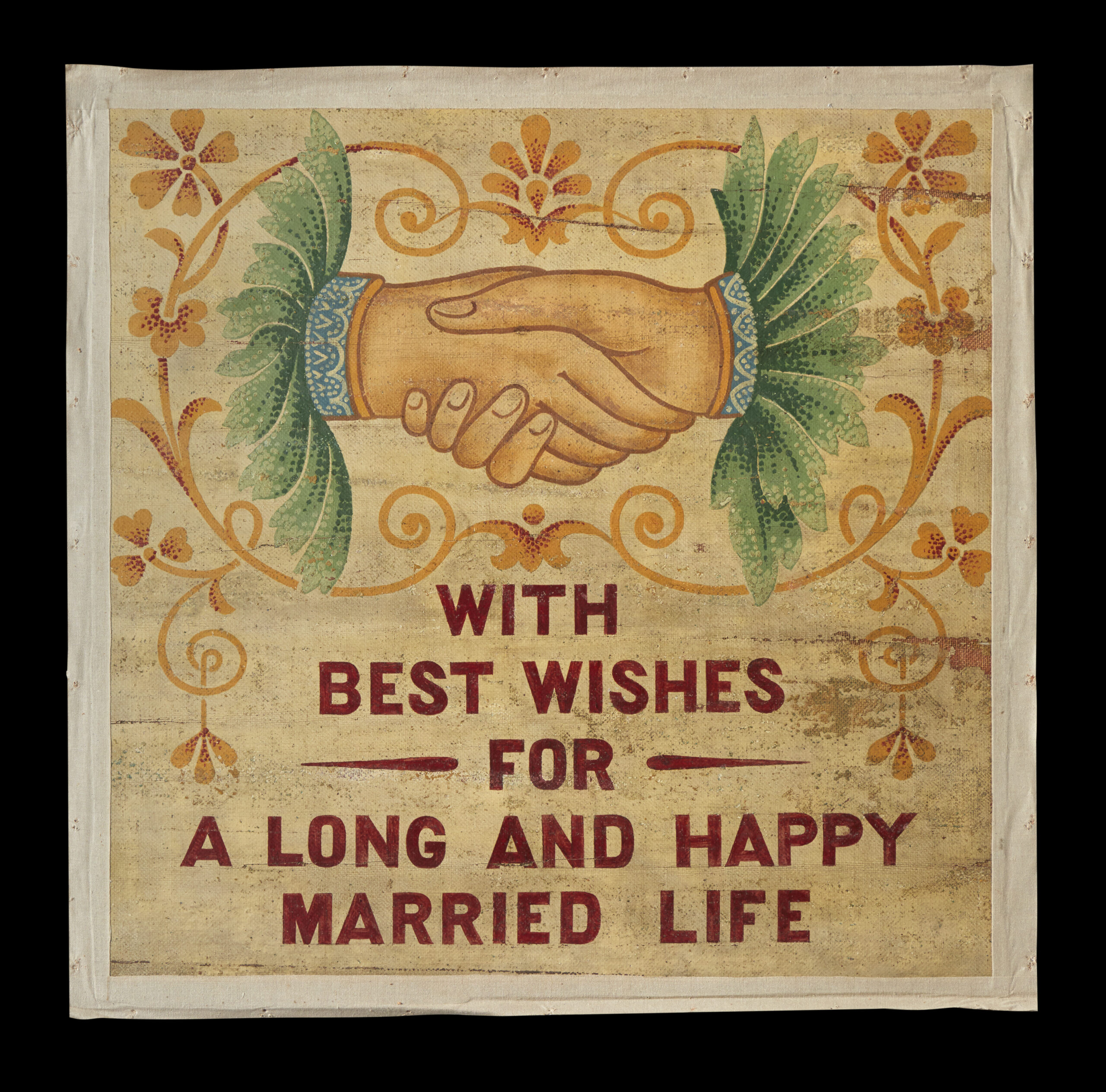
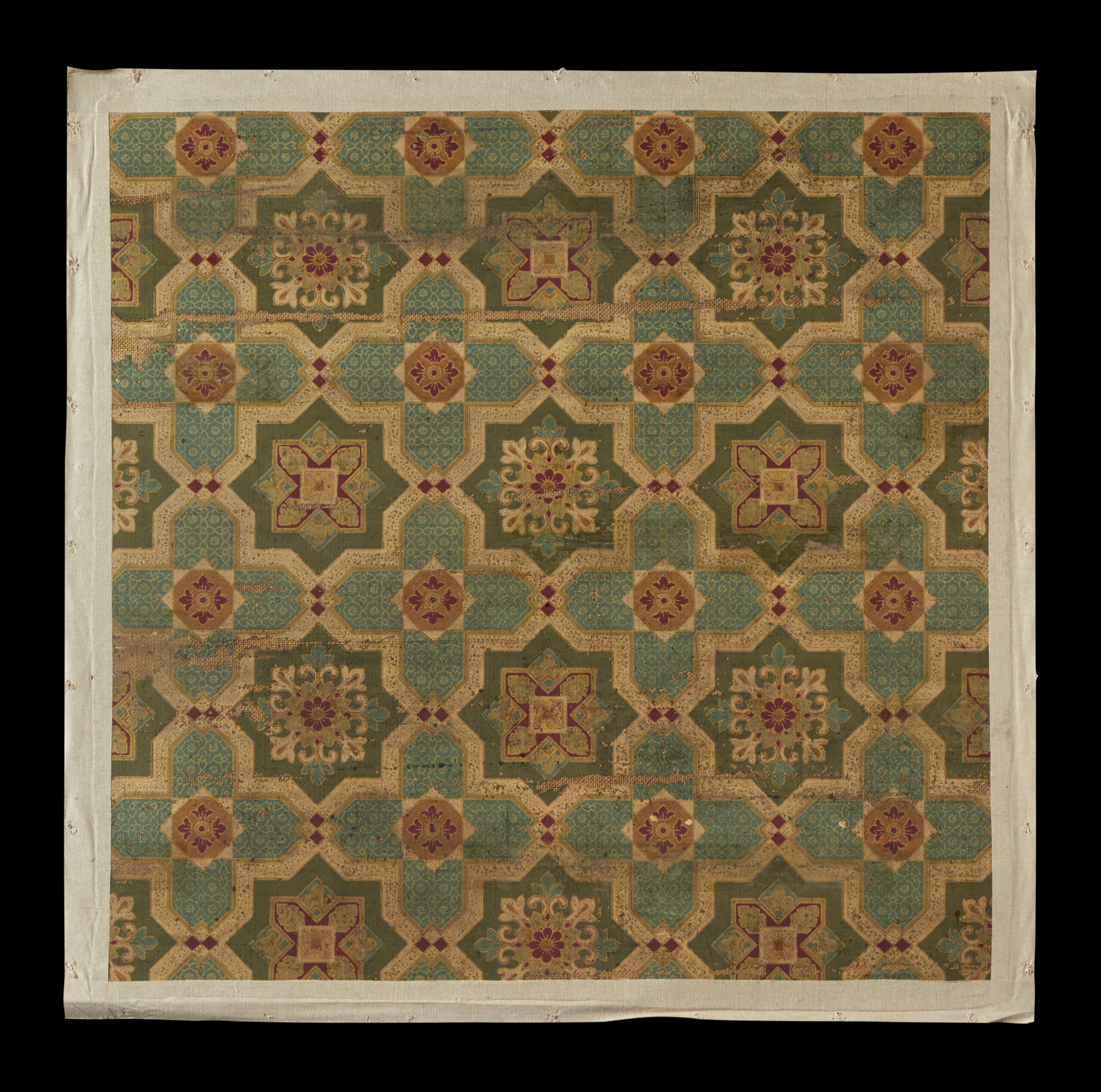
A floorcloth banner from our collection. The first image shows the design painted on the ‘bottom’ of floorcloth. The second shows the printed ‘top’, which would become the back of the banner when it was carried.
For Nairn’s however, floorcloth wasn’t just for floors. From the late 19th century up until the First World War, it was used to create a series of hand-painted banners, which were carried in processions by the workers. The patterned ‘top’ side of the floorcloth became the back of the banner, and the plain ‘bottom’ side was painted with a design and slogan. Usually, these praised the Nairn family or the products made by the company.
We know from photographs and secondary sources that dozens of different banners were made. Today, only five are known to survive – all in our collection. We are not currently aware of any other banners like this in the world, so it is possible that these are the only five in existence.

A floorcloth banner from our collection, created in 1907.
This banner was created by the engineers and fireman from Nairn’s Folly floorcloth works to commemorate the wedding of Robert Spencer Nairn on 6 July 1907. To mark the occasion, the Nairn family organised a workers’ excursion to their estate in Rankeilour (near Cupar, Fife). This would have been the first time this banner was carried.

A photograph showing the Nairn’s workers marching with floorcloth banners during their 1903 excursion.
At the beginning of the day, Nairn’s workers gathered at each of their places of work across the town. The first group then set off from the Canvas works, marching towards Nether Street where their colleagues from the Floorcloth Works would join them as they passed Mid Street. An article in the Fife Free Press (dated 13 July 1907) records that all the banners in our collection were made and carried by the Floorcloth Works group, who also wore floorcloth caps and sashes.
After a short interval, the Linoleum workers would join in behind them, led by a foreman carrying a sword. The Trades Band played at the front of the procession, and the Pathhead Band played at the back.
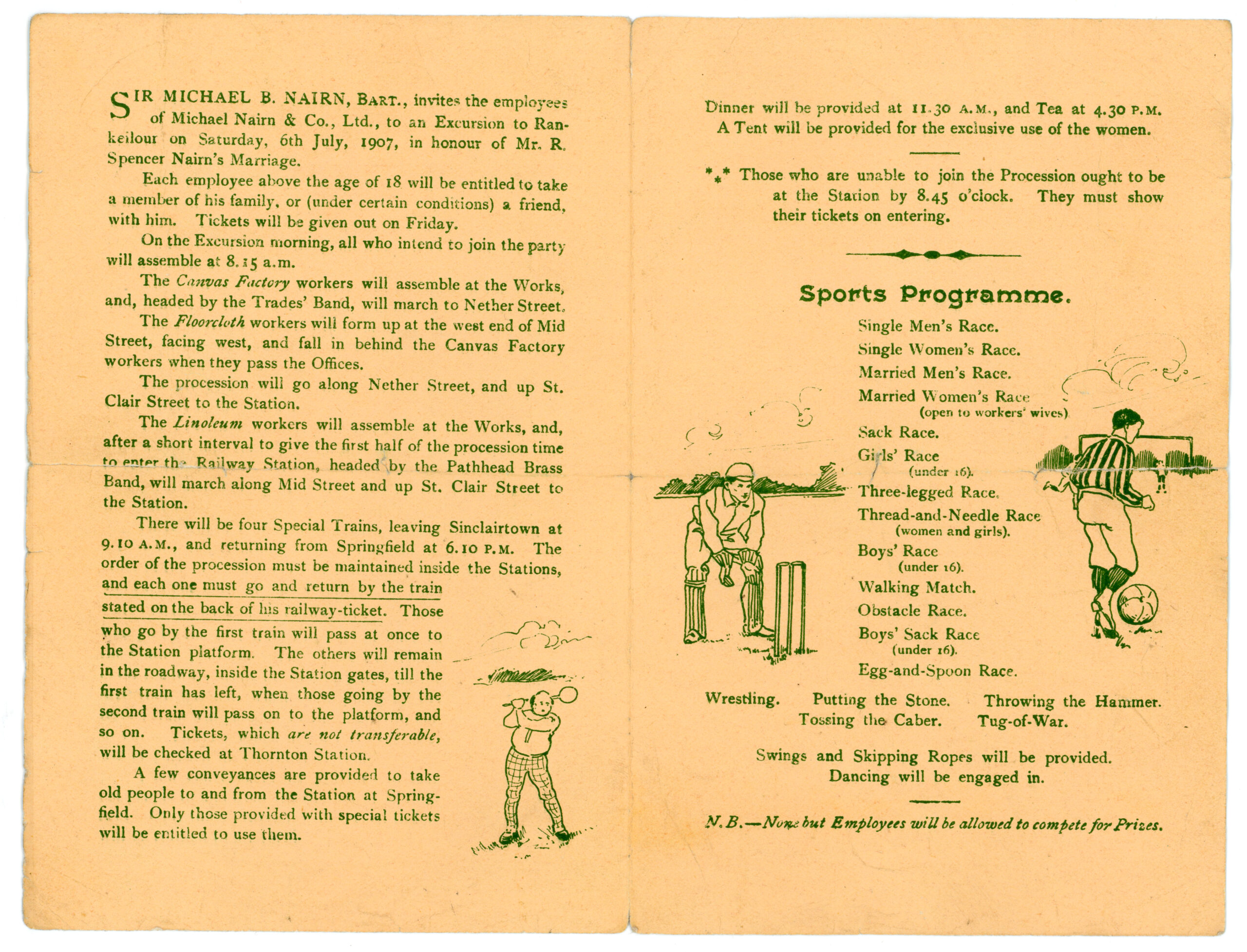
The itinerary produced for the 1907 Summer Excursion.
All workers then boarded special trains at Sinclairtown station, where they were taken north to Rankeilour. In total, over 2,400 people attended, as each worker was permitted to bring a family member or friend along with them.
On arrival there, they enjoyed an early lunch (served at 11:30), followed by dinner at 16:30. In between, they played the sort of games you’d expect at a summer fete (including the sack race and the egg and spoon race) and a Highland games (including a caber toss).
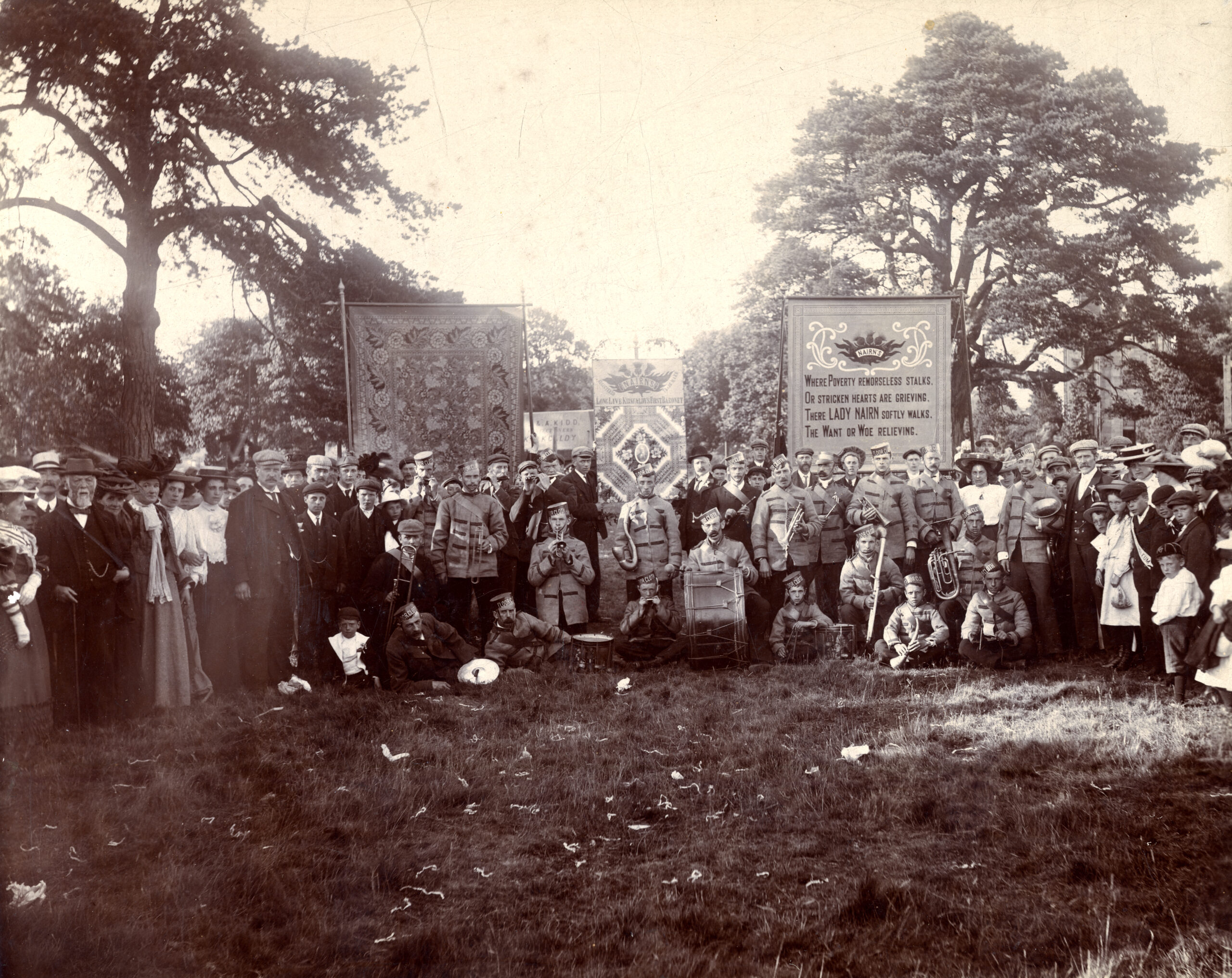
The Nairn’s workers at Rankeilour during their 1905 Summer Excursion.
We know from other excursion itineraries in our collection that these excursions happened on at least two other occasions during this decade – first in 1901, and next in 1905. However, it is possible that this trip to Rankeilour may have been the last in which our floorcloth banners were used.
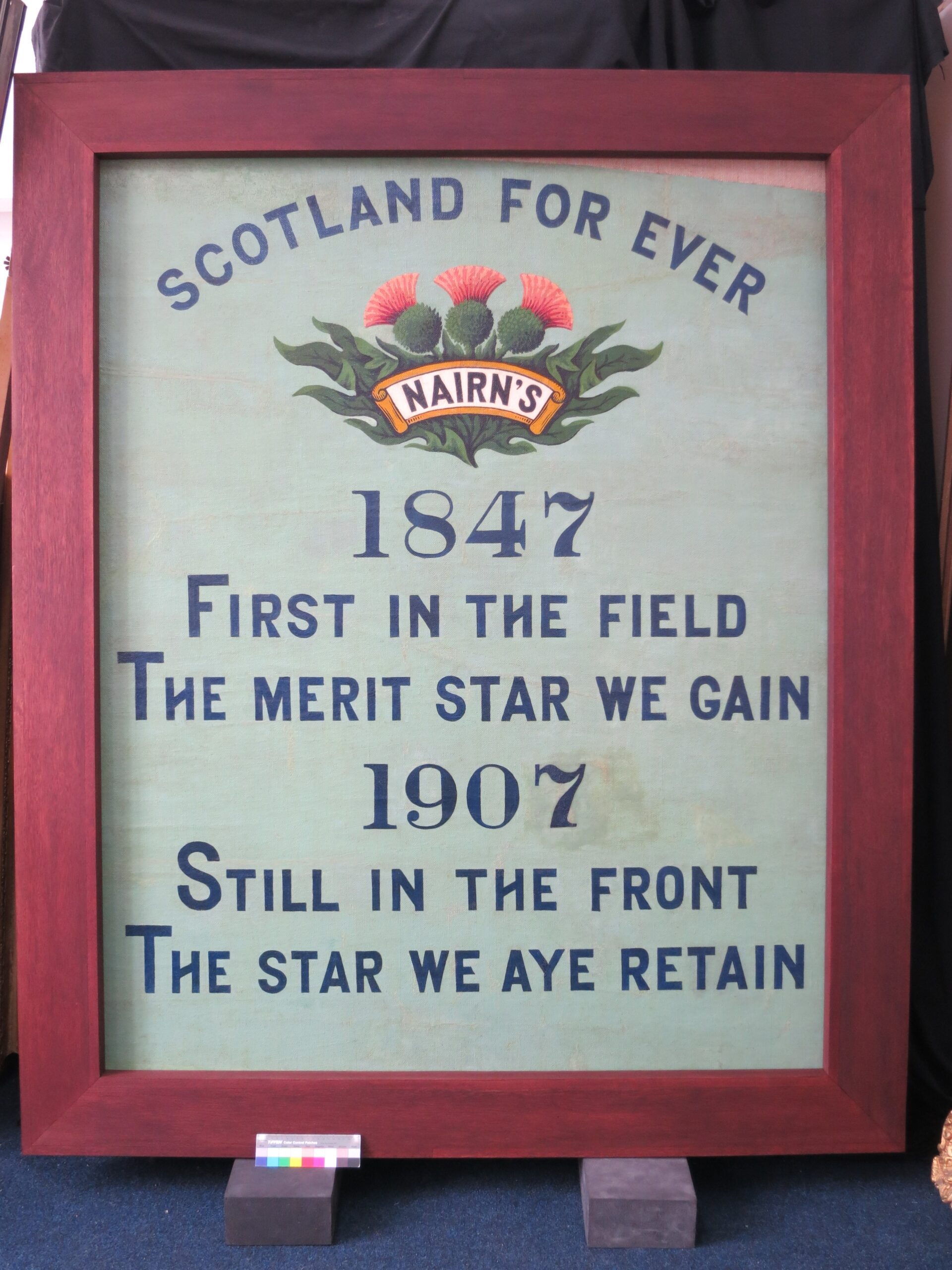
This banner was conserved in 2020, and is currently on display at Kirkcaldy Galleries.
We know that this banner was carried along with ‘Lang May His Lum Reek’ in 1907. From conservation in 2020, we know that this banner had the date on it repainted each time it was carried. As the date visible was the last time it was updated, it is possible that this was its final outing. If this is the case, then it is likely that our ‘Lang May His Lum Reek’ banner was also only carried on this single trip.
Interested in seeing our floorcloth banners in person?
‘First in the Field’ is part of our permanent displays in Kirkcaldy Galleries and can be seen in the Moments in Time gallery, opposite the café.
‘Lang May His Lum Reek’ will be going on display as part of the Flooring the World exhibition, which will open at Kirkcaldy Galleries on 25 November 2023.
It is also possible to see two of the three remaining banners at our collections store in Bankhead, Glenrothes. You can make an appointment to see them by e-mailing museums.enquiries@onfife.com
_______________________________________________
Flooring the World is a two-year project exploring the history of the Fife linoleum industry. It is funded by the Esmée Fairbairn Collections Fund, which is run by the Museums Association.
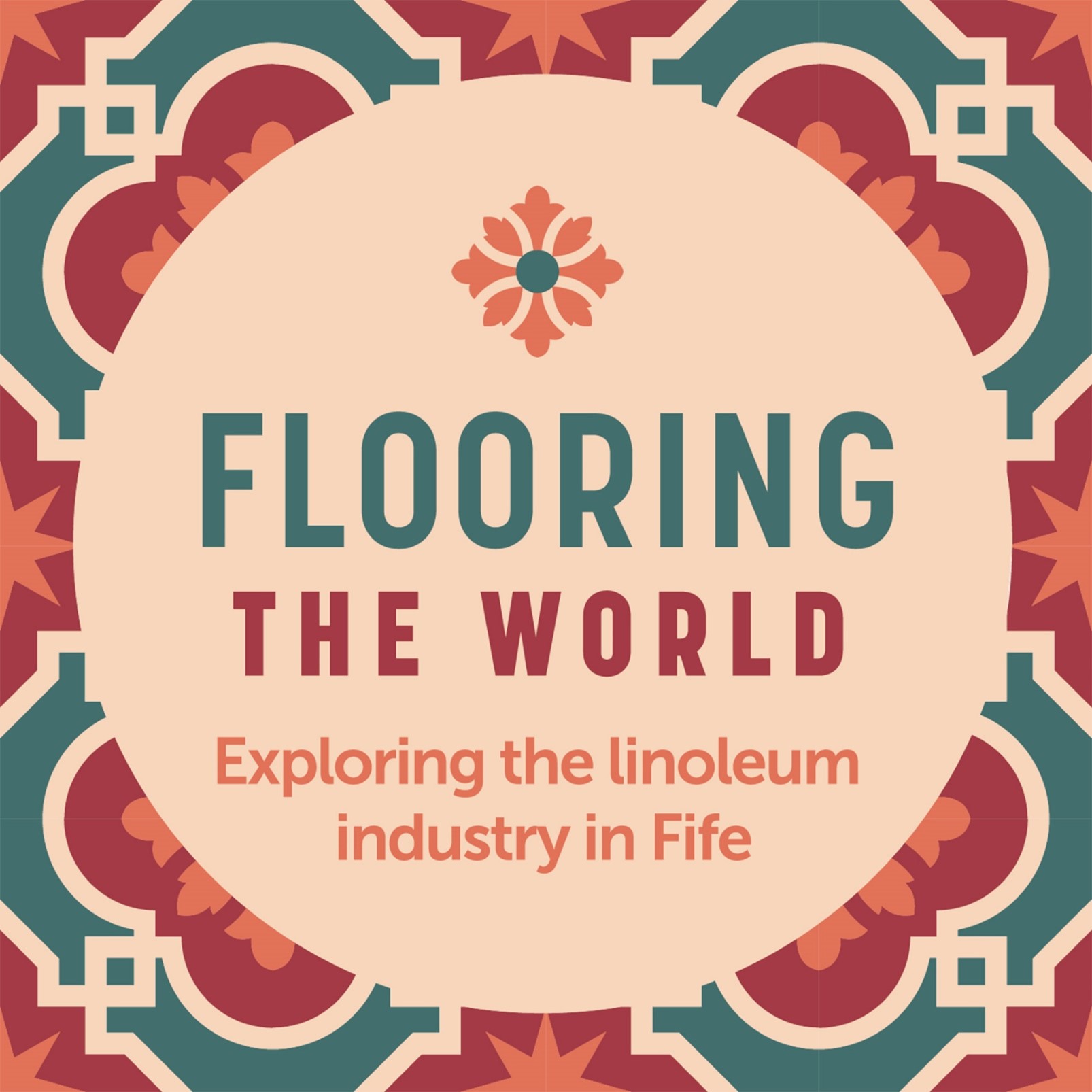
![]()



